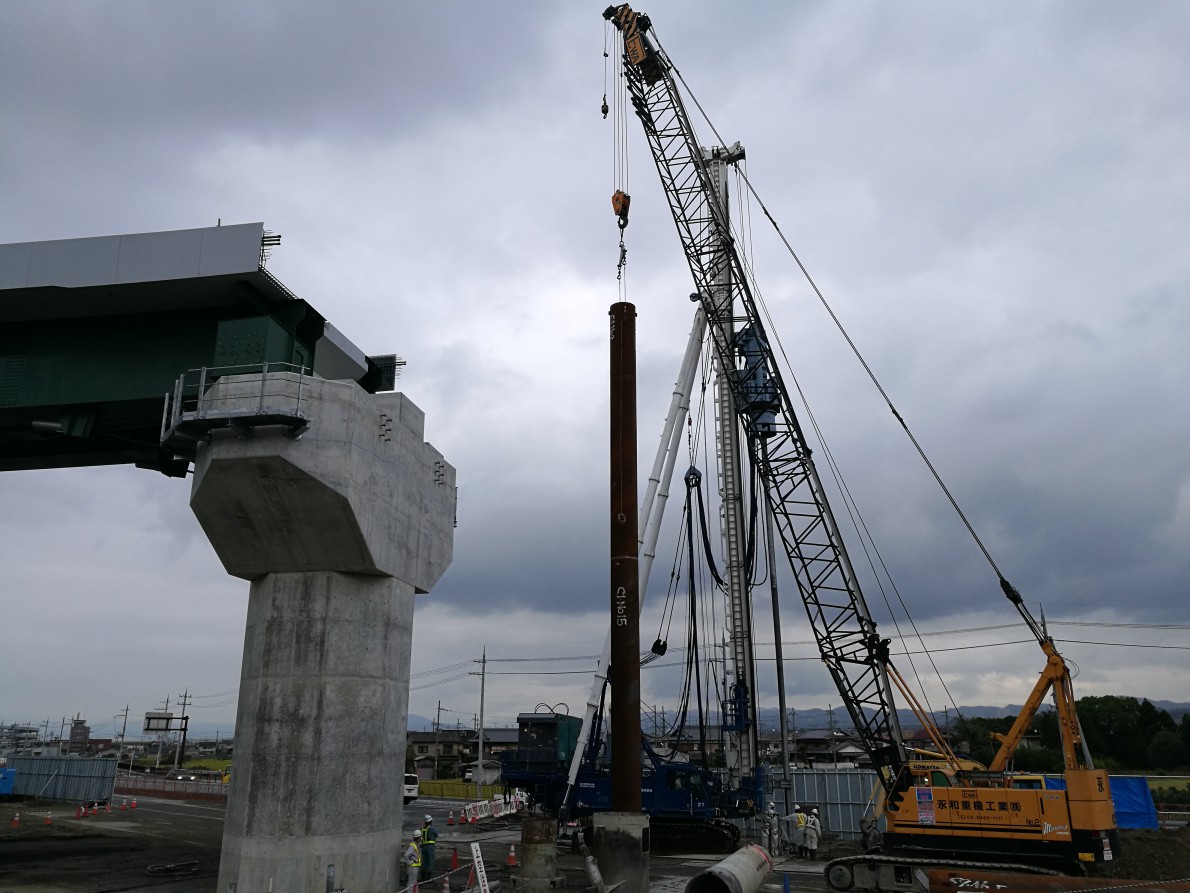Shin-Meishin Expressway

The third and last excursion of today, 11th of October, was a visit to a construction site of the Shin Meishin Expressway. The construction company in charge is called NEXCO, and two employees and our interpreter delivered a nice presentation which included showing us some sketches for construction. NEXCO is a Japanese company established in 2005 and it has approximately 13 500 employees. Their core business is the construction, management and operation of expressways in the western part of Japan.
The excursion took place near the Joyo junction, where a new part of expressway was being constructed. We could see the first part of a very high viaduct of this Shin Meishin Expressway. Due to the hilly landscape there are many tunnels and viaducts on this track. The Shin Meishin Expressway connects the Shin Expressway to the Meishin Expressway, which illustrates Japanese creativity of names. We were explained that the reason to build this new expressway was to reduce traffic jams on this track. On the parts of this expressway that have opened before, they argued that the traffic jams were reduced by as much as 80%, so they are hoping that this positive development will continue.
We were shown around the construction site,
on which we could stand only a few metres away from enormous steel piles (heipalen)
that were put in the ground. An accurate description by the Japanese workers
was accompanied by the sounds of metal, turning cranes and a lonely welder on
the site. The piles were meant for a steady foundation as they get as low as 20
to 30 metres underground. This is one of the most important measures against
earthquakes that are taken in this project. Another measure against earthquakes
included the installation of flexible connections between the different parts
of the construction, so the construction is able to stand some shaking. This
information links perfectly to the micro study topic about earthquake
protection measures in Japan.
During the excursion, we were told that the construction of this part had been
paused by the government for almost 10 years. The project has already started
in 1993, which means that this is a relatively long construction project
although this does include the 10 year stop regulated by the government.
Interestingly, the only change to the original design was to narrow the roads,
for which the reason was to save money. The question why this was decided
instead of lowering the viaduct a little still remains unanswered. The Japanese
acknowledged the adverse effects for safety of narrowing the roads (e.g.
emergency vehicles cannot go through smoothly), but they also emphasised the
importance of a minimum height of the viaduct to be prone to floods and
disasters.
This nice highway excursion concluded with a group photo and then we returned to our Japanese bus to go back to the hotel.
